Not far from the pyramids in Giza a new Egyptian Museum is receiving finishing touches while objects from the old museum in Cairo’s city center are beginning to be moved to their new home. While it was clear during my visit that the famous edifice on Tahrir Square is beyond it’s useful life, even from the outside it’s thrilling, a colonial era monument to the long human history of Egypt. It seems a bit sad that soon it will be just another state office building. I’m glad I saw it before it’s emptied of its treasures and becomes history itself.
Ground Floor Hall
The approach to the museum is impressive and the contents overwhelming. I don’t know if the impending move has upset the equilibrium inside the building or if the magnitude of the collection just renders the building inadequate to display it. I suspect the latter and while I lament the move from the historic edifice, the possibilities for coherent display will certainly be an improvement.
18th Dynasty colossal statue Amenhotep III, reign 1387-1350 B.C. & Queen Tiy
Many of the items on display most interesting to me were, logically, in glass cases. It was a tough assignment taking pictures. Reflections from dirty glass and low light made for difficult conditions and the choice of images to post was often dictated by which were most visible or in focus, not necessarily by the items I most wished to show. But I guess there’s more than one way to narrow the possibilities.
Side Room Ground Floor
Below are five groups of photos in chronological order. First, the oldest, five of models for the dead to take into the afterlife to sustain them as living ones had in life. Then the 18th dynasty Amarna Period, one that’s always particularly interested me because of a pharaoh who shook up the system, banished the many gods in favor of one, the Aten, the sun. The effort was ultimately not a lasting success, Tutankhamen ascended the throne and during his short reign Egypt again became a multi-theistic society, thanks to all those priests who’d been out of a job. There are 9 photos of items found by Howard Carter in the most famous tomb discovery ever. Then two photos related to the prolific Ramesses the Great, who built among many things, Abu Simbel, famously moved and saved in 1968 from the rising waters of Lake Nasser. Finally, three from the later Roman period of Egypt’s history.
Troup Of Archers, 11th Dynasty, c. 2135-1994 B.C.
Tomb of Prince Mesehti
From the Metropolitan Museum website:
"All the accessible rooms in the tomb of Meketre had been robbed and plundered already during Antiquity; but early in 1920 the (New York City Metropolitan) Museum's excavator, Herbert Winlock, wanted to obtain an accurate floor plan of the tomb's layout for his map of the Eleventh Dynasty necropolis at Thebes and, therefore, had his workmen clean out the accumulated debris. It was during this cleaning operation that the small hidden chamber was discovered, filled with twenty-four almost perfectly preserved models. Eventually, half of these went to the Egyptian Museum, Cairo, and the other half came to the Metropolitan Museum in the partition of finds."
Boats & Fishermen, 12th Dynasty, c. 1991–1802 B.C.
Tomb of Meketre
A Census of Livestock, Tomb of Meketre
Amarna Period, late 18th dynasty, Amenhotep IV,
became Akhenaten, reigned c. 1346–1332 B.C.
Colossus of Amenhotep IV / Akhenaten
Scene of worship of the Aten (Sun) showing
the distinctive style of the Amarna Period.
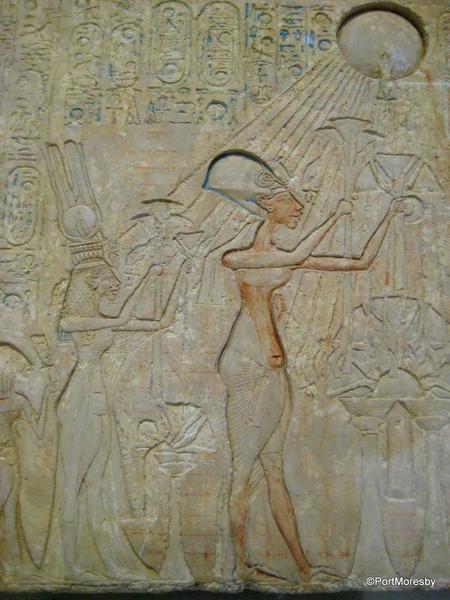
Alabaster canopic jars, used to preserve viscera for use in the afterlife.
Below, the desecrated royal coffin of Akhenaten
discovered in Tomb KV55, Valley of the Kings.
Treasures of Tutankhamun, late 18th dynasty, reigned c. 1332–1323 B.C.
Mannequin of Tutankhamun
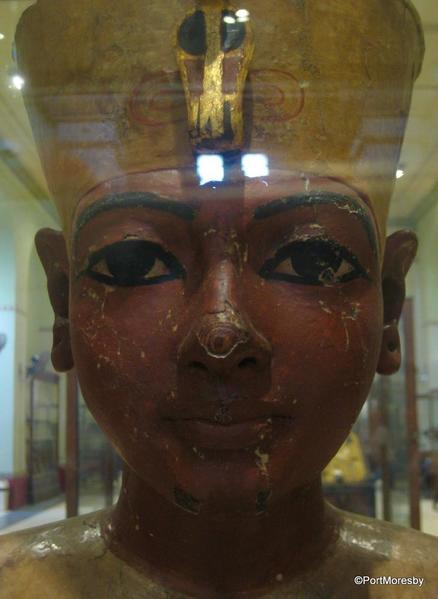
Alabaster Canopic Jars & Container
Shrine for Canopic Jars
Burial sandals depicting enemies positioned to be symbolically stepped on.
Pharoah's Golden Bed
Portable Shrine of Anubis
Furniture made for Tutankhamun's use in the afterlife.
Ramesses II, known as Ramesses the Great
Shown as a child, symbolized by the gesture of finger to mouth,
with god Horus, 19th dynasty, reigned 1279-1213 B.C.
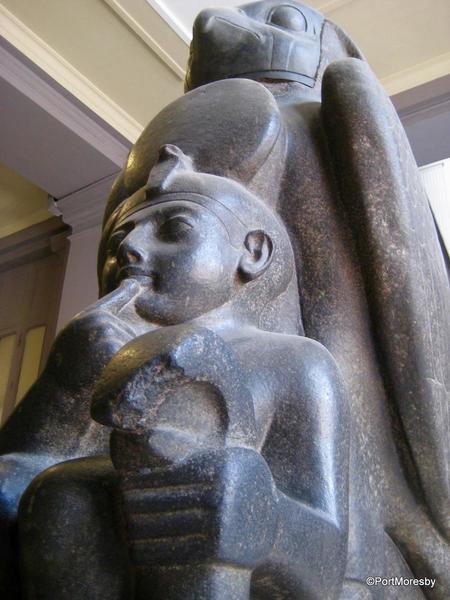
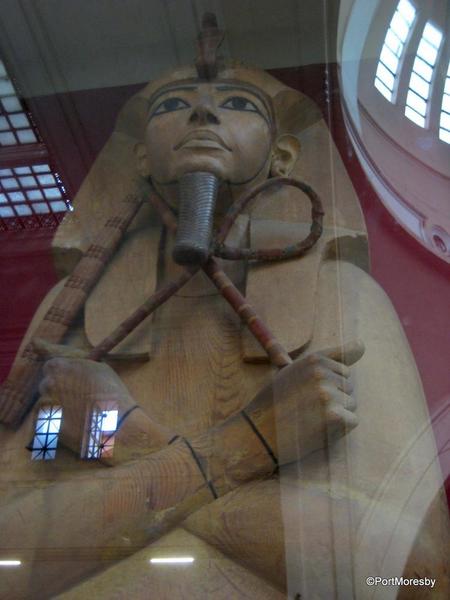 Above, the simple wooden coffin of Egypt's greatest ruler.
Above, the simple wooden coffin of Egypt's greatest ruler.
Roman Period, 1st. Century A.D.
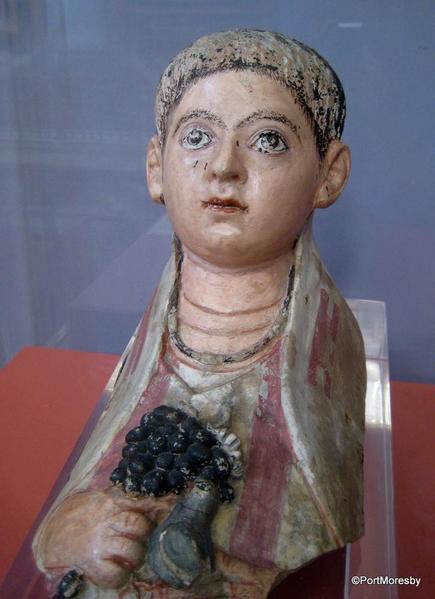
Below, funerary mask of Ammonarin, reign of Claudius, 41-54 A.D.
with red flowers & snake bracelets of the period.
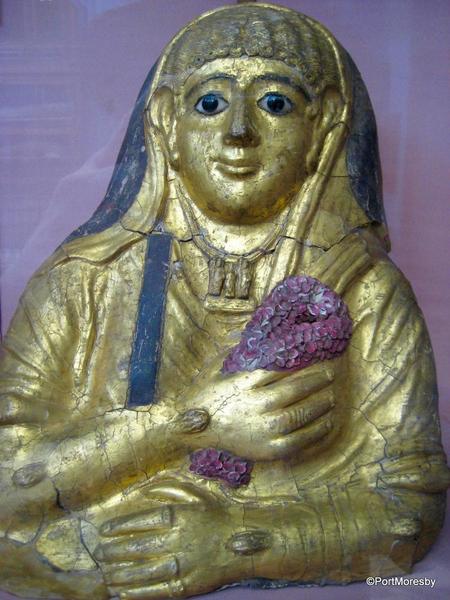
Wooden sarcophagus, terra cotta decoration
Greco-Roman period, 332 B.C. - 313 A.D.
Ahmed Gamal, Egypt Tour Guide Extraordinaire,
can be reached by email, agrdaly@yahoo.com.
All episodes of 'PortMoresby in Egypt' can be found here.
And others of PortMoresby’s contributions here.

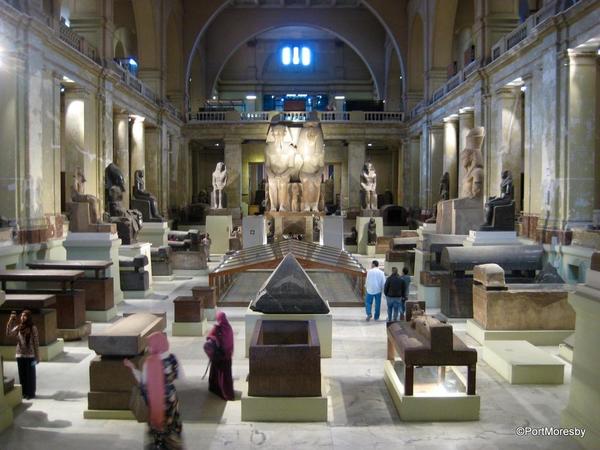
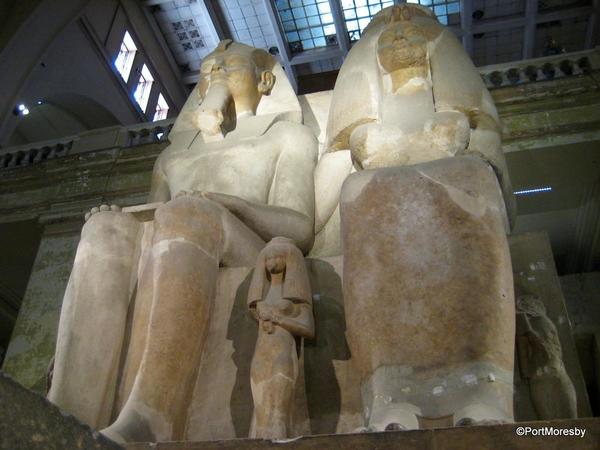
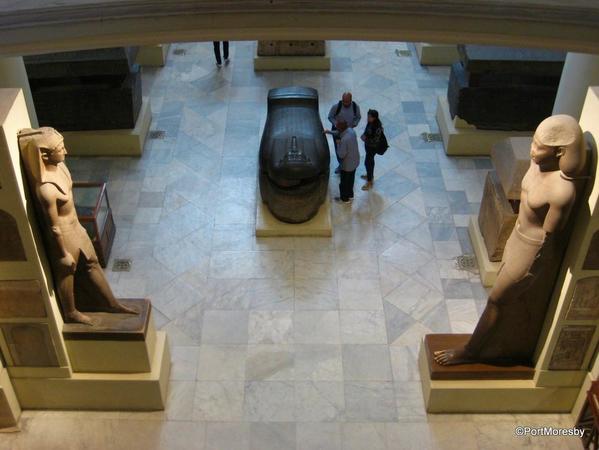
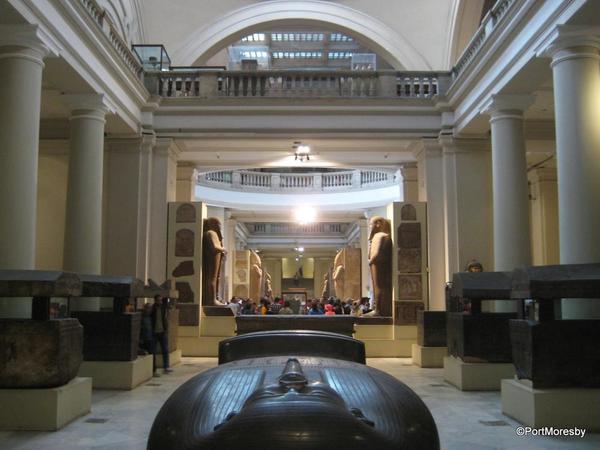
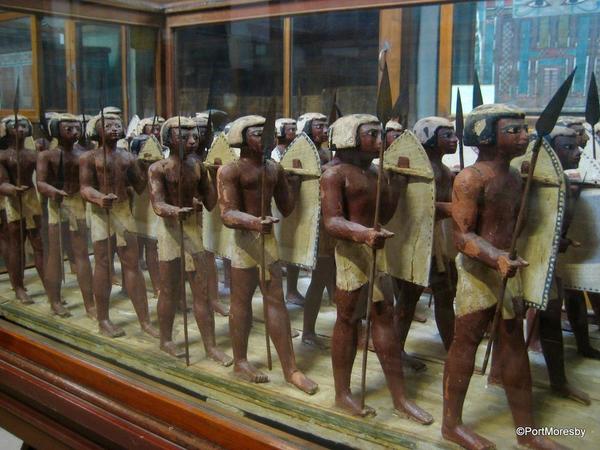
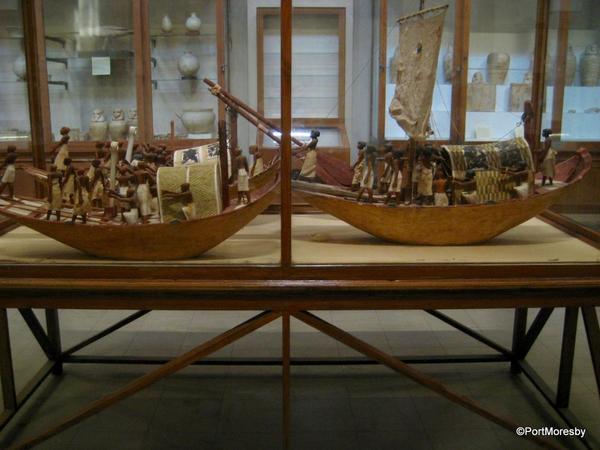
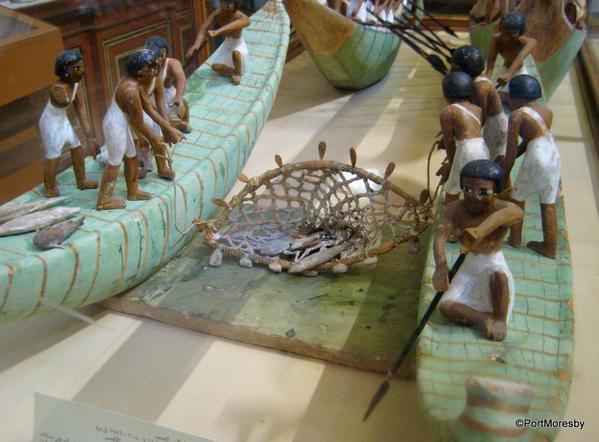
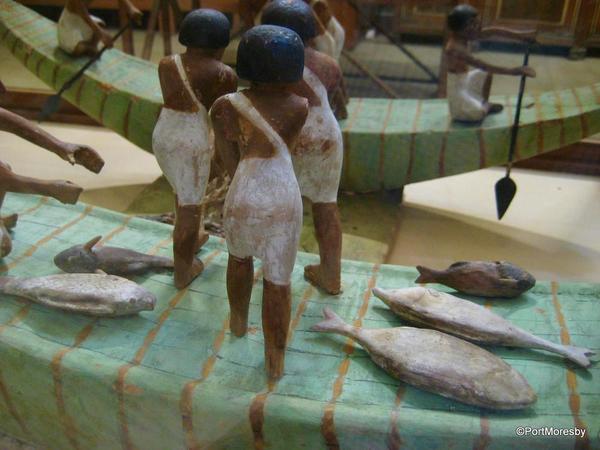
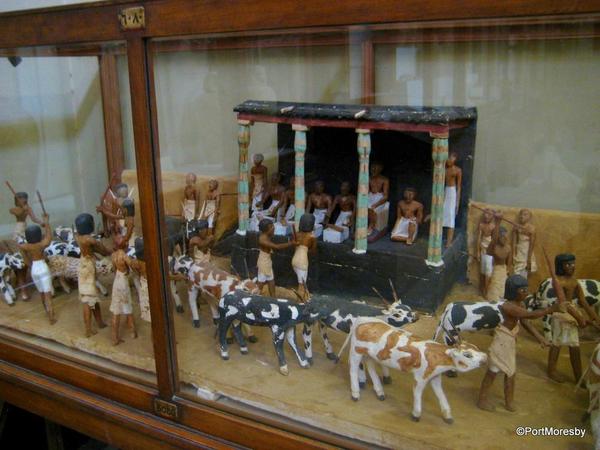
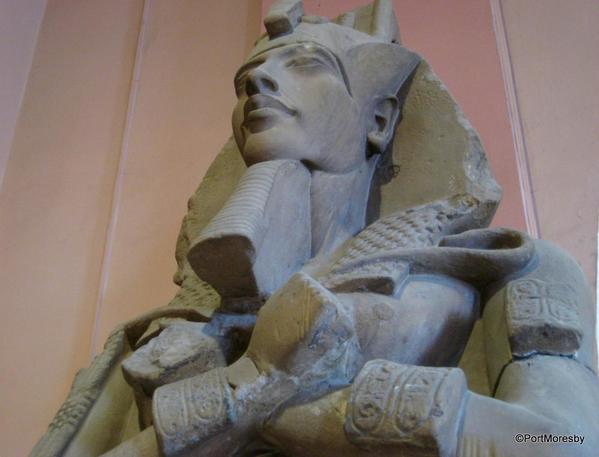
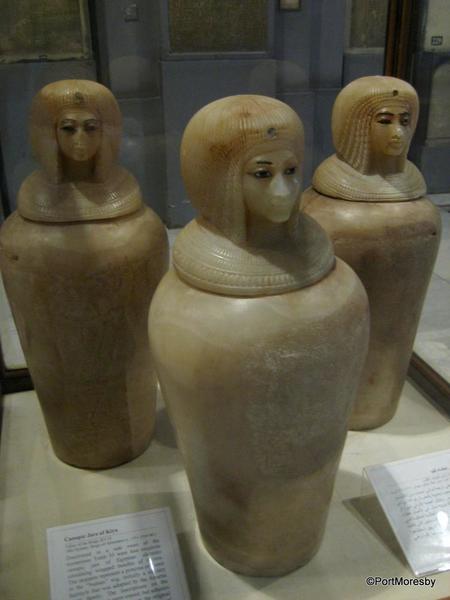
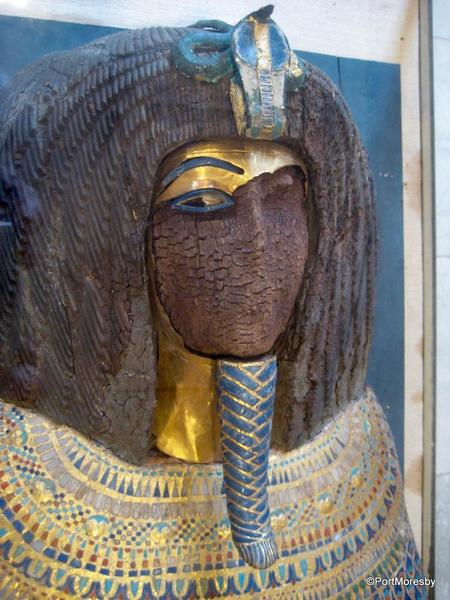
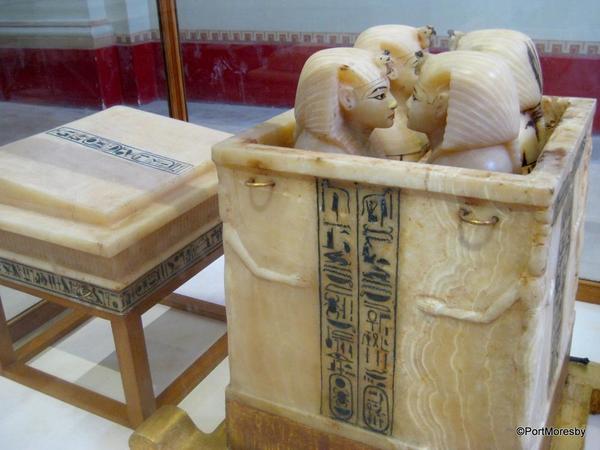
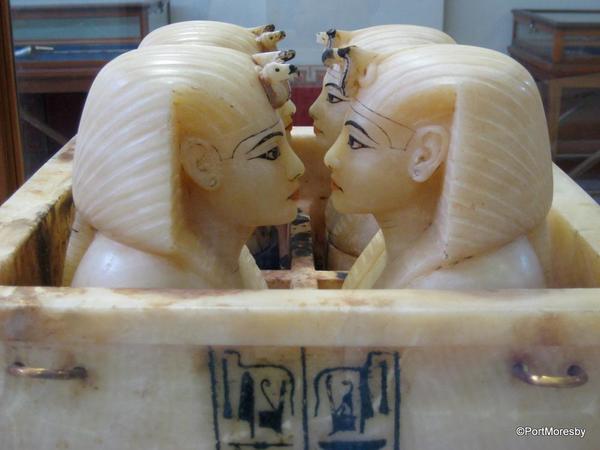
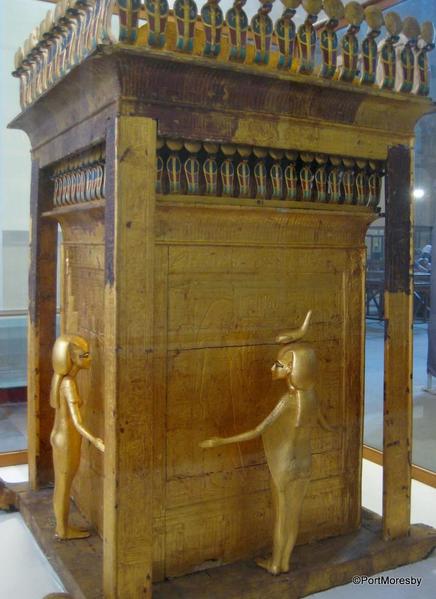
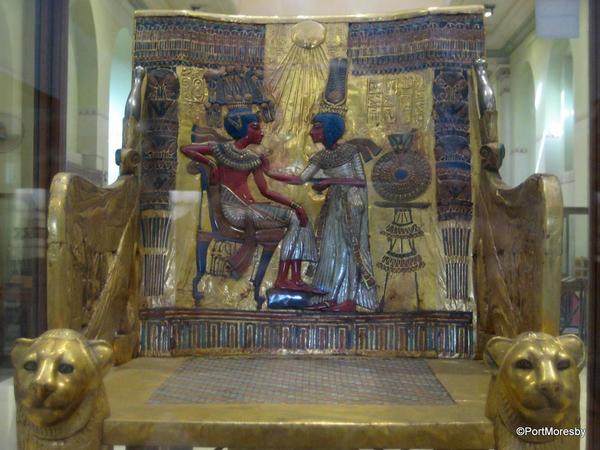
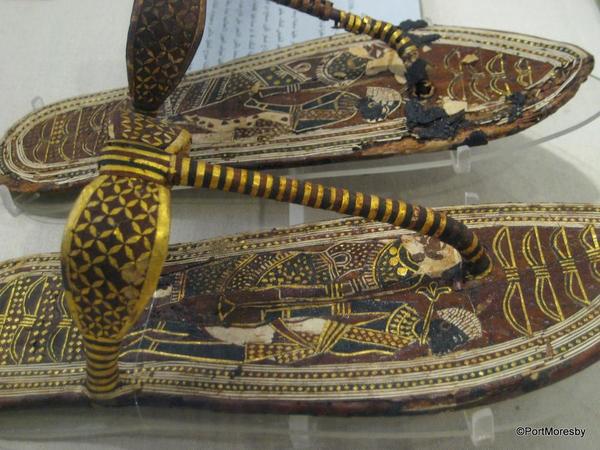
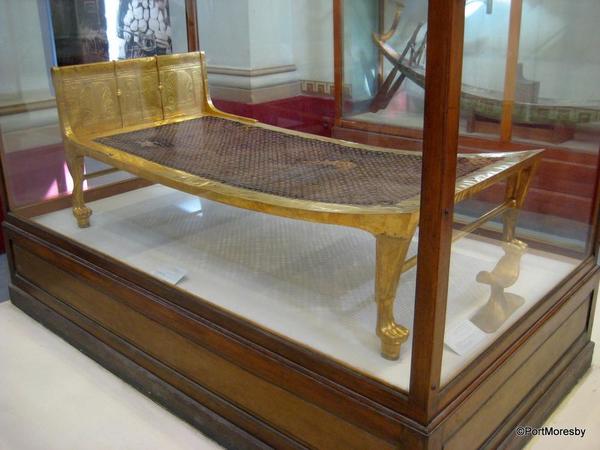
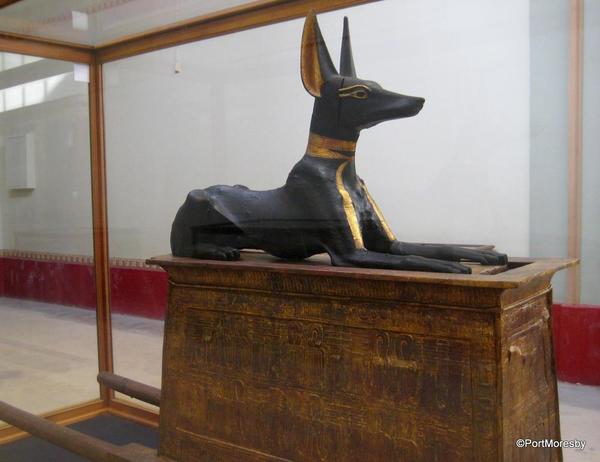
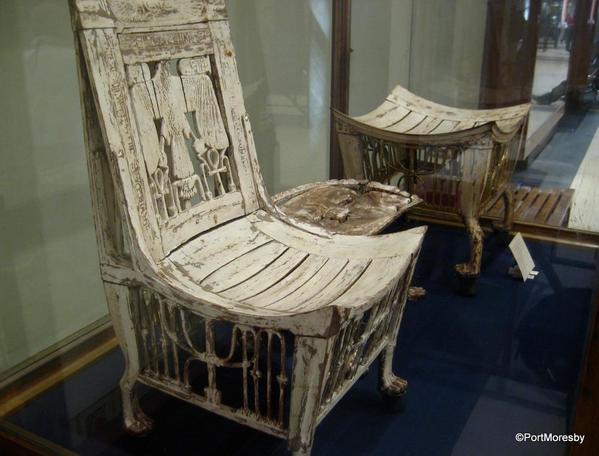
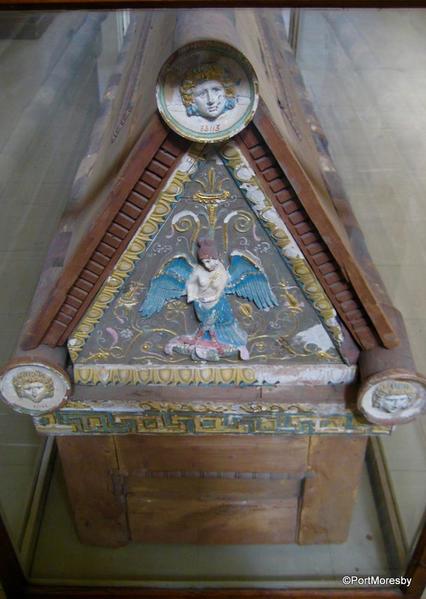
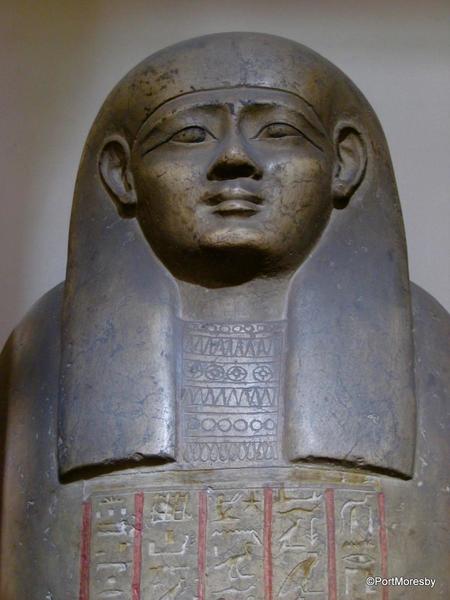





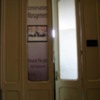
























Comments (1)